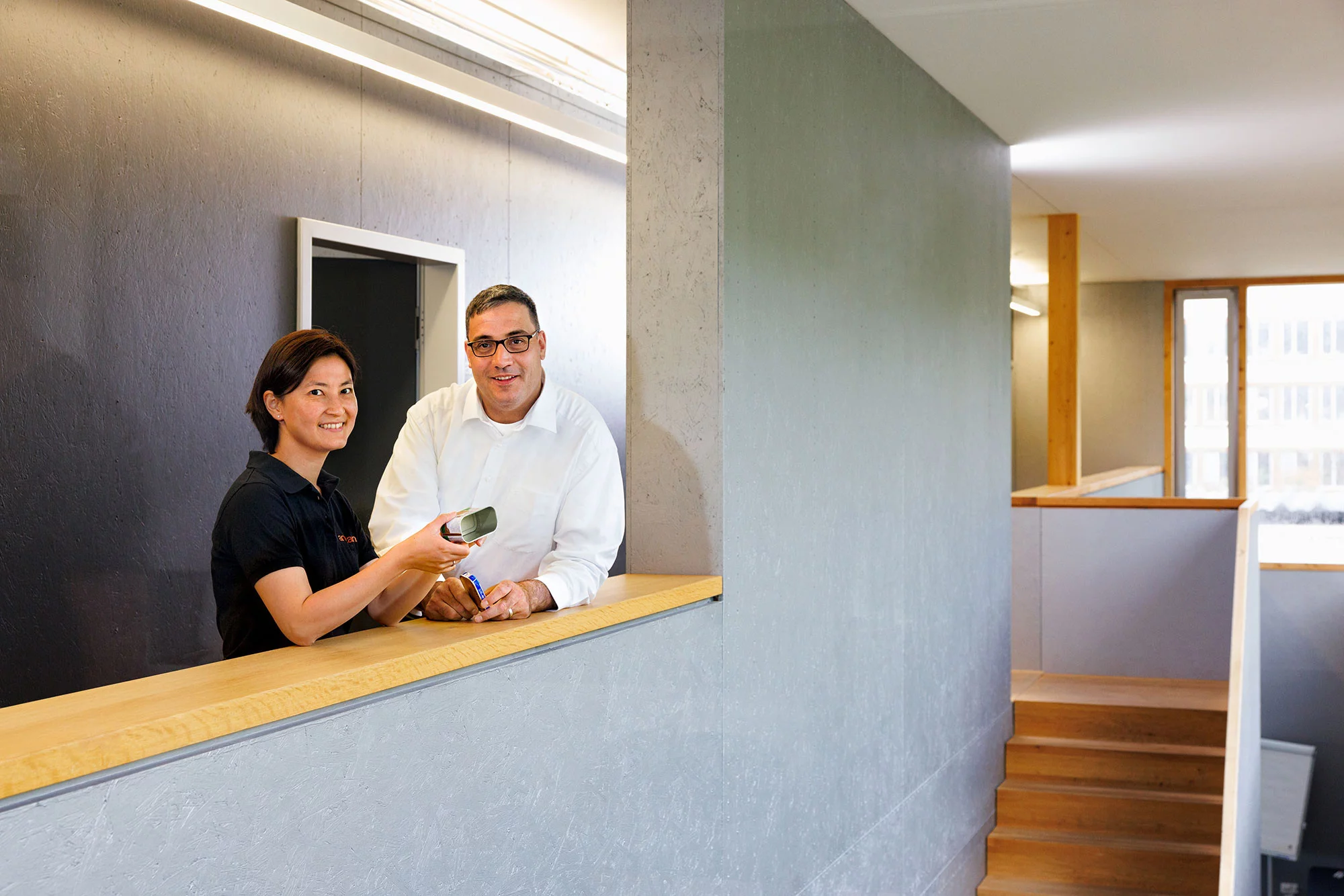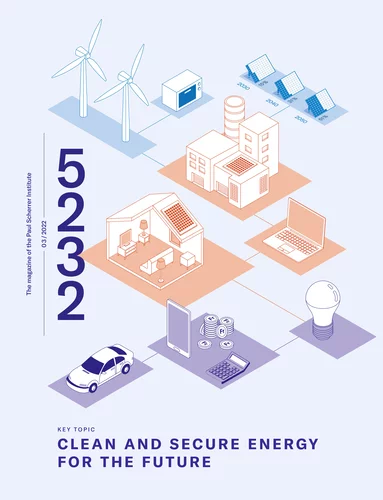Whether everyday objects or high-tech materials for renewable energy technologies: for more than three years now, the technology transfer centre ANAXAM has been facilitating access to the large research facilities at PSI and supporting small and medium-sized enterprises (SMEs), start-ups and large companies worldwide with a complete package of services to use these facilities for their own material analytics.
150 million degrees Celsius – that’s how hot the plasma is supposed to be inside the fusion test reactor ITER in Cadarache in southern France, which researchers want to use to put a future energy production technology to the test. For comparison: we can bake the perfect, crispy pizza at around 350 degrees Celsius; lava flows, depending on the type of rock, at a temperature of more than 1,000 degrees Celsius; and there is a remarkable heat of around 15 million degrees Celsius in the interior of the sun. The unimaginable 150 million degrees Celsius researchers plan to achieve at ITER would be unique in our solar system. Even if the hot plasma in this so-called tokamak never comes directly into contact with the walls, one can vaguely imagine what enormous thermomechanical and radiation-intensive stresses these materials will have to withstand.
Before the start of test operations under such infernal conditions, the materials must be subjected to controlled stresses, and any structural changes inside them must be checked with high precision. This is exactly why the technology transfer centre ANAXAM offers many state-of-the-art analytic methods that can be carried out at the large research facilities of PSI.
Precise materials analysis
ANAXAM is a non-profit association founded in 2019 by the Paul Scherrer Institute, the University of Applied Sciences and Arts Northwestern Switzerland, the Swiss Nanoscience Institute and the Canton of Aargau. The association’s goal is to facilitate access to the large research facilities for industrial projects. The acronym ANAXAM stands for Analytics with Neutrons And X-ray Advanced Manufacturing.
Neutron beams and synchrotron radiation – a special form of X-rays – can be used to examine objects non-destructively. This not only allows a three-dimensional view inside the object, but also lets us identify and localise the different chemical elements through spectroscopy, or characterise a material morphologically through diffraction and small-angle scattering. Depending on the object, neutron and synchrotron beams can be applied one after the other, and the results can be combined, for example, to achieve different contrasts in the imaging.
The sheer dimensions of PSI’s large research facilities allow material analytics that is simply impossible in conventional industrial laboratories. “For example, the Swiss Light Source SLS at PSI, which is used to generate X-rays, delivers a brilliance that exceeds that of laboratory-scale X-ray sources by an impressive factor of ten billion,” says Christian Grünzweig, ANAXAM’s CEO. In Switzerland, analytics using neutron and synchrotron radiation is only possible at the large research facilities SLS and the Swiss Spallation Neutron Source SINQ at the PSI.
For companies to benefit from these complex facilities, ANAXAM’s core team of six is on hand to provide advice and practical assistance. “We are a one-stop shop. Customers come to us with a problem, we advise them, we purchase measurement time from PSI, we set up a specific infrastructure if needed, and we carry out the measurements, including data analysis. The customers receive the data and their interpretation in a final report,” explains ANAXAM project manager Cynthia Chang. Before joining ANAXAM, materials scientist Cynthia Chang and Christian Grünzweig were engaged in analytics research at PSI – Chang with synchrotron and Grünzweig with neutron analytics. Their expertise is perfectly complementary in their current positions. Together with their team, with a wide range of backgrounds in research and industry, they are reinforcing Switzerland’s status as an industrial location using the most advanced analytical methods for the products and processes of tomorrow.
Fuel cell components made in Switzerland
Fuel cells are considered an important technology for electromobility in the future. Inside such a cell, hydrogen and oxygen react to produce water, releasing energy in the form of electricity and heat. The central component in a fuel cell is the so-called bipolar plate, where the electrochemical reaction takes place. With respect to its channel geometry, this plate must be designed in such a way that oxygen and hydrogen can be distributed evenly, the heat of the reaction can be dissipated efficiently and the water resulting from the reaction can be reliably transported away. The plate must also be made with a precise fit to ensure the cells are gas-tight.
To achieve this precision, bipolar plates are conventionally cast from the material graphite. This process is very complex and expensive, however – graphite bipolar plates account for up to 40 percent of the production cost of a fuel cell. In addition, they are very heavy, which in turn has a negative effect on performance.
To address these problems, the company Feintool developed a process enabling bipolar plates to be manufactured from extremely thin stainless steel sheets in a single production step. Besides offering a faster and cheaper production method, the use of stainless steel also results in lower overall weight and reduced volume compared to fuel cells with conventional graphite plates. However, forming and cutting out such a plate demands maximum precision, since the metal used is extremely thin (0.075 millimetre) – the sheet metal press has to work with a very delicate touch.
Instead of time-consuming iterative testing to ensure the perfect interaction of press and tools, Feintool turned to ANAXAM. Cynthia Chang explains the team’s successful collaboration with Feintool: “We were able to examine the manufactured bipolar plates using high-resolution synchrotron computed tomography and thus characterise their three-dimensional structure. This enabled us to determine exactly where the channel geometry shows deviations and where the production process needs to be further optimised.”
Everyone is welcome at ANAXAM
But it’s not only high-tech materials like bipolar plates that find their way to PSI by way of ANAXAM. Everyday objects are also subject to non-destructive examination, so it can happen that the CEO and the project manager sometimes may philosophise about the structure of a tin can.
Its most important property is that it is airtight. The German company Henkel Adhesive Technologies uses a special sealant that is applied between the rim of the can and the lid before these two components are folded together. “We used high-resolution neutron computed tomography for this project. This enabled us to analyse the distribution of the sealant in the seam of the can non-destructively and three-dimensionally. This helps the company understand potential faults in application, which in turn can help to extend the shelf life of the packaging,” Grünzweig explains.
“It doesn’t matter whether a customer comes to us with an everyday object or a high-tech product,” the ANAXAM boss continues. “Because what can be measured can also be improved. That’s why a large multinational or the smallest SME can benefit from our methods and, thanks to state-of-the-art material analytics, further optimise its products or processes.”
ENEA, Italy’s national agency for new technologies, energy and sustainable development – which is co-developing the wall materials for the ITER tokamak in Cadarache – was also able to benefit from this expertise. ENEA managed to characterise microstructural changes in their materials that were caused by the harsh conditions in the plasma. For this project, ANAXAM employed a number of unique neutron analysis methods. It was also possible to mimic the plasma-generated radiation exposure of the wall materials by means of neutron beams at PSI. In this way ANAXAM made an important contribution to one of the many puzzle pieces that have to come together to pave the way towards a functioning fusion reactor, and thus a possible energy source of the future.
Text: Paul Scherrer Institute/Benjamin A. Senn
Copyright
PSI provides image and/or video material free of charge for media coverage of the content of the above text. Use of this material for other purposes is not permitted. This also includes the transfer of the image and video material into databases as well as sale by third parties.



